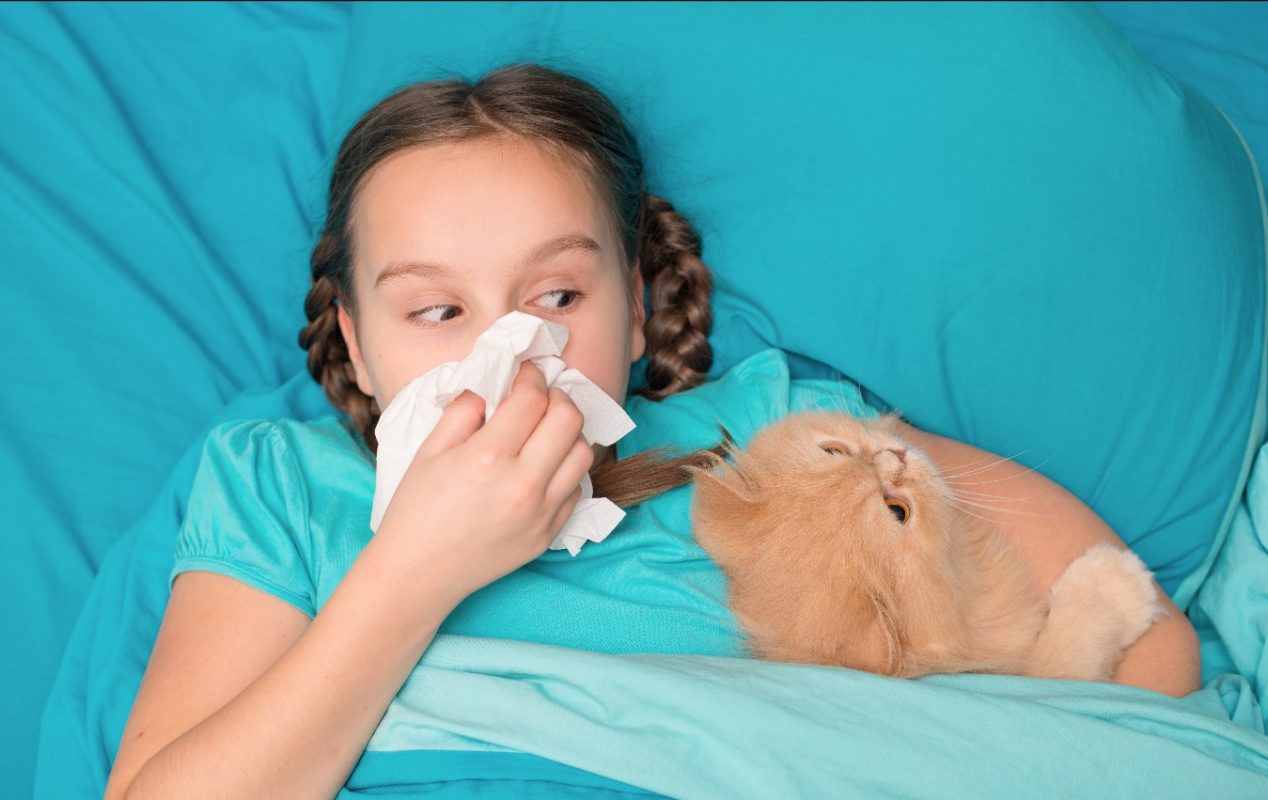Everything, Cats, Dogs, Health care
When You’re Allergic to Animals
Itchy, puffy, watery, red eyes. A stuffy or runny nose. Sneezing. A scratchy or sore throat. Itchy skin. Hives. Shortness of breath. Allergic reactions to family pets can develop in childhood or in adulthood, even after years of living with animals. Finding another home for pets is often not an acceptable option.
In a 1997 study, only 21 percent of adults with allergies to dogs or cats complied with their doctors’ advice to stop sharing living quarters with their pets. What can you do if you become allergic to Fluffy or Fido?
Identify the allergen
Allergies to dust mites, mold, and cockroaches and their droppings have similar symptoms to allergic reactions to pets. Seasonal allergies can also produce similar symptoms. If your symptoms don’t disappear in the fall, identify or rule out other possible allergens.
Reduce the pet allergens in your home
Major causes of allergic reactions:
- Dogs Dander (dead skin cells), and saliva
- Cats Dander and Fel d1 (a protein secreted by the sebaceous glands in the skin and the salivary glands)
- Rabbits Saliva, fur, skin, and urine
- Birds Feather dust (dried dander)
- Gerbils, guinea pigs, hamsters, and mice Dander and urine
Household care
Pet dander can get in your home even if you don’t have pets. Visitors can bring it with them on their shoes and clothing. Keeping pets out of the home doesn’t solve the problem completely unless none of your friends, relatives, or neighbors has pets.
Here’s what you can do:
- Keep pets out of the bedroom and off upholstered furniture.
- Get a HEPA air filter for the bedroom and for other rooms as well if possible. HEPA filters remove over 99 percent of airborne allergens.
- Vacuum at least once a week, and make sure your vacuum cleaner isn’t one that blows dust back out of the vacuum cleaner and into the home again. Some vacuum cleaners are designed with allergy sufferers in mind.
- Wash pet bedding and soft toys in hot water weekly.
- If you have carpets, steam-clean them regularly. Better yet, remove the carpets if possible. Throw rugs are easier to clean. Cleaning will probably never completely remove embedded allergens, but regular cleaning keeps them to a minimum.
- Clean upholstered furniture and drapes regularly.
- Damp-mop non-carpeted floors.
Animal care
- Have someone else brush or comb your dog, cat, or rabbit daily, preferably outdoors or at least away from the main living area.
- Apply an allergy neutralizer weekly to animal fur (see Anti-allergen products).
- Have someone else bathe your dog weekly. Rinsing the animal just with water between baths may help keep the dander down.
- If you don’t have another person to groom and bathe animals, and to clean litter boxes and cages, wear a particle mask while doing these tasks to avoid breathing in airborne allergens.
- Feed your pet quality food. In the book The New Natural Cat, Anitra Frazier writes that some people who are allergic to cats don’t have any allergic reactions to her cats. She credits the lack of allergic responses to the diets she feeds her cats and their feeding patterns (detailed in her book), which reduce dander.
Get medical treatment for allergies
- Antihistamines, decongestants, and nasal steroids provide symptomatic relief of allergic reactions. Their effects aren’t strong enough for everyone, however.
- Immunotherapy (allergy shots) have helped with more serious symptoms, even for veterinarians. The weekly shots may need to continue for up to five years. While they help about 85 percent of those who follow this treatment, they don’t help everyone.
Get homeopathic treatment for allergies
Several medical journals have reported studies showing homeopathic treatment to be effective in reducing allergy symptoms.


